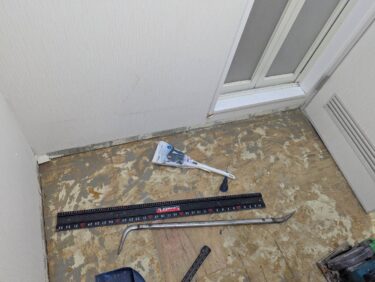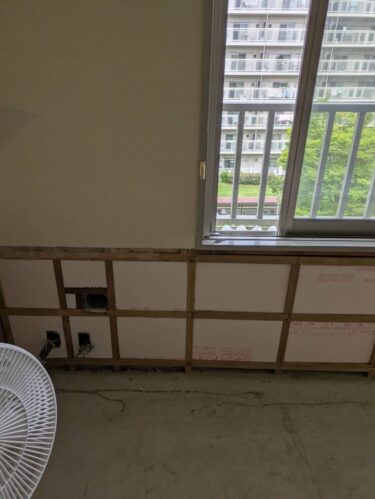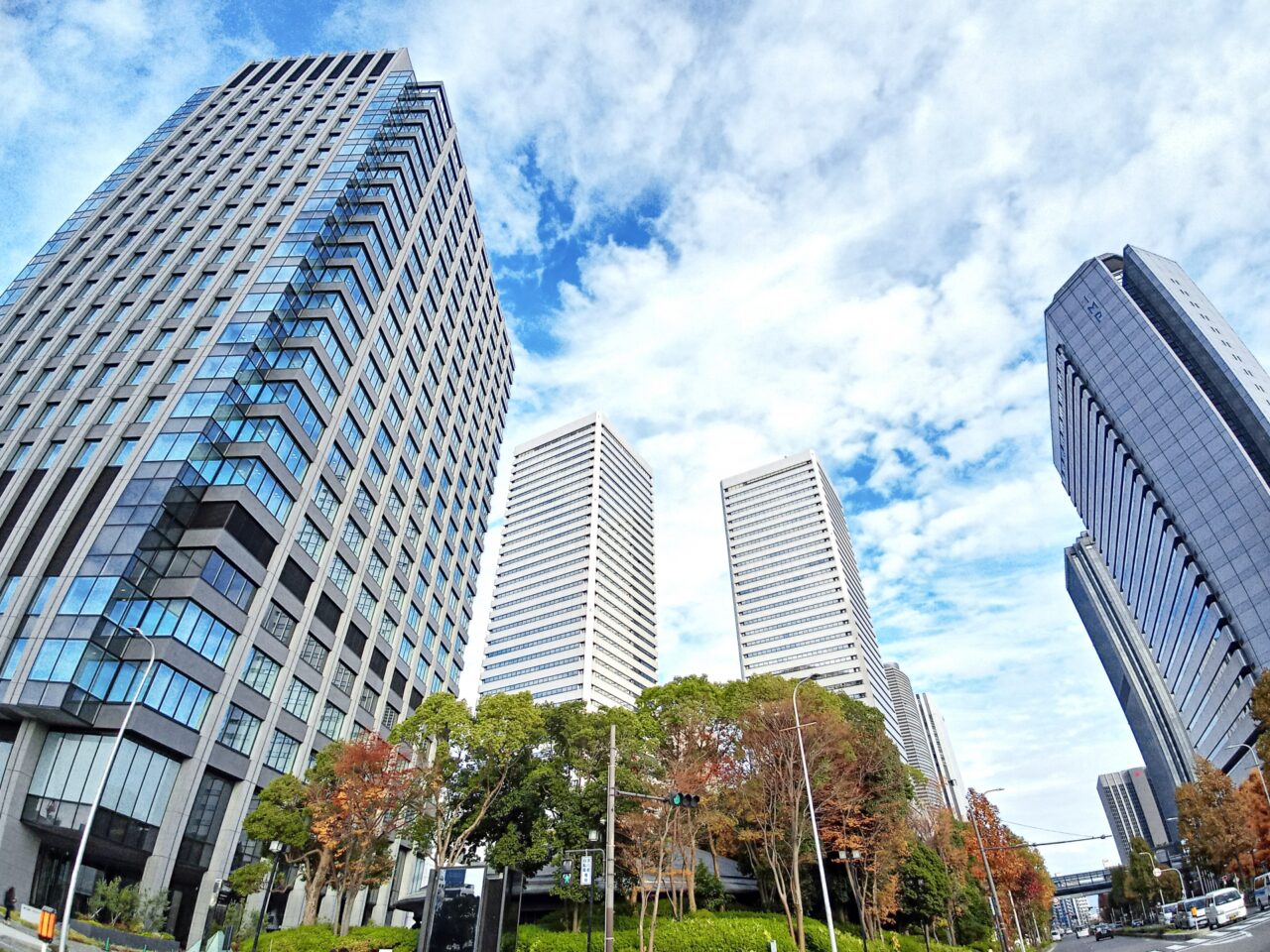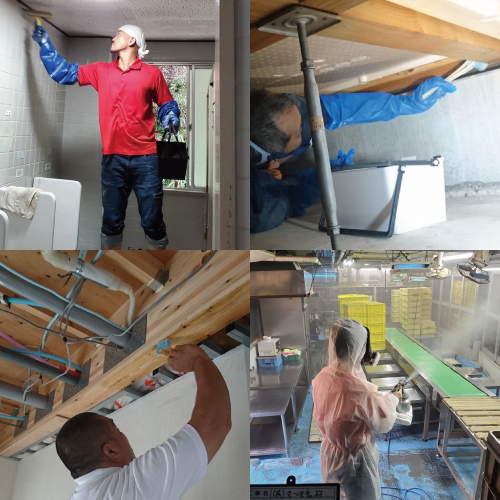Issue raised: Mold found in government and public housing, vacant homes, and luxury rental properties has a serious impact not only on the living environment but also on aesthetics, asset value, and even health. Complaints tend to be particularly serious in properties aimed at wealthy individuals. What you’ll learn from reading this article: This article explains why mold is prone to grow in these properties, what kind of health damage and economic risks it poses, and provides easy-to-understand explanations of specific self-management and specialized construction methods. Benefits of reading this article: Understanding the appropriate management methods and contractual measures will help you prevent mold-related problems and take a step toward maintaining aesthetics and asset value.
1. Mold Issues in Vacant Properties, Government Housing, and Public Housing
Mold frequently arises in vacant homes, government-owned housing, and publicly managed facilities due to inadequate routine care and trapped humidity. Japan’s humid climate, particularly during the rainy season and winter condensation, accelerates mold growth. These issues not only degrade appearance but can also endanger occupants’ health, making proper measures crucial.
1-1. Common Causes of Mold in Government Housing and Staff Quarters
In government-managed housing, staff quarters, or dormitories, mold often stems from aging structures and a high vacancy rate. When rooms remain unoccupied, air circulation stops, HVAC systems shut down, and humidity becomes trapped — especially in bathrooms, kitchens, closets, and near windows. Older buildings lacking insulation and moisture control allow mold to seep into materials, meaning surface cleaning alone is insufficient.
1-2. Risks of Neglected Maintenance in Vacant Properties
Long-term abandonment of properties invites not only mold but also pests, structural decay, and foul odors. Mold corrodes building materials, peels wallpaper, weakens floors, and lowers asset value while increasing renovation costs. Mold’s odor and stain during viewings repel prospective tenants or buyers, reducing occupancy and sales potential. Routine inspections, dehumidification, and professional upkeep are essential defenses.
2. Mold Complaints in Luxury Rentals and Wealthy Properties
Surprisingly, even expensive rental apartments and high-end properties suffer mold. Residents paying premium rents expect pristine conditions, and any presence of mold triggers complaints and may lead to lease termination.
2-1. Why Mold Occurs Even in High-End Properties
High-end properties often feature airtight construction, high-grade windows, and energy-efficient insulation—conditions that can trap moisture and cause condensation. Imported materials like natural wood and plaster are also prone to mold. Even if owners commission professional upkeep, outsourced management and moisture-prone finishes can allow mold to spread unnoticed.
2-2. Who’s Responsible When Complaints Arise?
Lease agreements typically place responsibility for mold prevention on landlords. If mold stems from poor ventilation or failed equipment, the landlord bears repair and remediation costs. However, if caused by tenant neglect—like poor ventilation or furniture placement—tenants may be liable. Clear contractual terms and documented reports/photos help mitigate disputes.
3. Health Risks of Mold and Its Relation to HVAC Systems
Mold produces airborne spores that can cause allergies, asthma, eczema, and respiratory infections—especially in the elderly and young children. Early detection and prevention are essential.
3-1. Mold, Allergies, and Health Effects
Common molds like Cladosporium release spores that can cause allergic rhinitis, asthma, and atopic dermatitis. Mold-related symptoms are often mistaken for colds, allowing chronic issues to develop. In facilities housing vulnerable people—like care homes and nurseries—mold control is critical to prevent serious illness.
3-2. How HVAC and Ventilation Systems Help Prevent Mold
Controlling humidity through ventilation and dehumidification is key. Regular filter cleaning, duct maintenance, and inspecting exhaust fans significantly reduce mold risk. In high-end properties with centralized HVAC, fungal growth within ducts can disseminate spores; thus, professional internal cleaning at least annually is advised.
4. How Mold Affects Aesthetic Appeal and Asset Value
Mold undermines the visual appeal of interiors, often staining walls and ceilings. This lowers tenant or buyer interest and can lead to price reductions or concessions during lease negotiations.
4-1. Direct Aesthetic Damage Caused by Mold
Visible black spots on bright wall surfaces convey neglect. Mold odors make mold more noticeable, damaging engagement during viewings. Mold can penetrate plaster and wood, hiding beneath surfaces and becoming latent defects—significant concerns in real estate transactions.
4-2. Impact on Asset Value and Rental Yield
Compromised aesthetics reduce valuation and occupancy rates. Luxury properties are especially vulnerable; even minor mold issues erode perceived quality and justify rent decreases.
5. Practical and Technical Mold Countermeasures for Government Housing and Luxury Rentals
Effective mold control combines routine prevention and specialized remediation techniques like MIST treatment.
5-1. Do-It-Yourself Preventive Actions (Ventilation, Cleaning, Dehumidification)
Homeowners should regularly ventilate by opening windows and running fans, keep furniture away from walls, and use dehumidifiers or AC dry mode. Surface cleaning with alcohol-based sprays helps inhibit spore germination.
5-2. Specialist Methods and the Advantages of MIST® Treatment
When mold spreads extensively or recurs repeatedly, specialists should be called. Typical methods like bleach or power-washing can damage surfaces and are prone to relapse. The MIST® method—micro-fogging a customized, non-abrasive agent—penetrates deeply, killing mold at its roots, reducing recurrence, and preserving expensive materials like wood and plaster.
6. Maintenance Tasks That Vacant Home Managers Must Perform
Vacant homes deteriorate quickly; mold causes, once present, can plague the property down to the core. Consistent sweep-and-maintenance routines protect assets effectively.
6-1. Recommended Schedules for Humidity Control, Ventilation, and Cleaning
Monthly inspections should involve airing out all rooms. Bathrooms and kitchens require checks of seals and drains; dust removal prevents spore accumulation. Humidity control via dehumidifiers is recommended to keep humidity levels below 60%.
6-2. Vacant House and Vacation Property Preventive Checklists
A sample maintenance checklist:
-
Monthly airflow refresh per room
-
Dehumidifier usage or moisture absorbers
-
Curtain and closet airing
-
Bathroom trap moisture top-up
-
Inspection for leaks or condensation
-
Water-prone area mold check and clean
-
Furniture placement for airflow
-
Power system and HVAC function check
Consistent routine cures oversight and prevents mold escalation.
7. Contractual and Response Procedures to Prevent Mold Complaints
Preemptive steps in lease agreements and structured response procedures reduce conflict when mold arises.
7-1. Lease Clauses for Mold Prevention
Include provisions requiring tenants to ventilate, clean, and dehumidify; define responsibilities if mold appears; require prompt reporting; and include remediation cost/role allocation to prevent disputes.
7-2. Response Flow When Mold Complaints Are Received
Best-practice mold response workflow:
-
Site inspection and photo documentation
-
Tenant interviewing and usage review
-
Cause determination (tenant/equipment/structural)
-
Explain mitigation options
-
Agree on plan including remediation and restoration
-
Execute remediation; advise tenant on prevention
Structured steps avoid escalation and legal issues.
8. High-End Mold-Control Services Tailored to Wealthy Properties
Luxury home owners value visible quality, comfort, and long-term value. Mold projects must match these demand levels with meticulous, discreet, and lasting solutions.
8-1. Infection Prevention and Asset Protection for Luxury Owners
High-value materials like hardwood, polished plaster, or natural stone require delicate handling. The MIST® method removes mold without damaging finishes, applying protective fog to neutralize airborne spores and uses post-treatment agents with durability of several seasons up to a year.
8-2. Sample Luxury Property Mold-Prevention Services
We offer:
-
Custom-formulated agents for luxury materials
-
No-odor, non-invasive MIST® fog treatments
-
Coverage of hidden zones: ceilings, wall cavities, subfloor
-
HVAC system and duct fumigation
-
Ongoing service contracts (2–4 times yearly)
This comprehensive approach builds trust and preserves long-term client relationships.
9. MIST®: A Specialist Mold-Removal Technology
The MIST® method provides a unique combination of precision, material safety, and long-term effectiveness.
9-1. Deep Penetration and Potent Mold Neutralization
Unlike abrasive methods, micro-fogged agents penetrate deeply to kill mold in substrate pores. It preserves surface integrity of wood, concrete, plaster, and has proven effective even on heritage buildings—demonstrating high technical reliability.
9-2. Sustainable and Health-Conscious for Humans and the Environment
Engineered to pass industrial wastewater tests, MIST® agents are safe for people—even children and seniors. They yield protection against airborne spores and surface recolonization for up to a year after treatment.
10. Summary: Mold Control Solutions—Vacant Homes, Government Housing, and Luxury Rentals
Mold leads to many harmful outcomes: compromised aesthetics, health risks, asset deterioration, legal issues, and tenant turnover. Yet it is manageable with proper strategy.
10-1. Commonalities and Differences Across Property Types
Government/government-managed housing suffer from inspection gaps. Luxury units demand pristine conditions; even minor mold triggers complaint and remediation. Vacant houses and vacation properties trap humidity over time, making mold rapid to develop. Common thread: moisture and inadequate care.
10-2. Recommended Priority Actions
-
Establish daily humidity control and ventilation
-
Swift remediation when mold appears
-
Define responsibilities via contract and policies
-
If recurrence is high or property is upscale, engage professionals
-
MIST® offers long-term reliability, safety, and peace of mind
Company Introduction: Taikou Kensou Co., Ltd. – Moldbusters Osaka & Mold Remodeling Tokyo/Nagoya
Mold solutions require more than just surface cleaning—they need durable prevention and preservation of property integrity. Taikou Kensou Co., Ltd., operating as Moldbusters Osaka and Mold Remodeling Tokyo & Nagoya, is one of Japan’s rare companies offering seamless integration of mold remediation and full-scale property renovation.
We utilize the MIST® method, which penetrates mold deeply, eliminating it without friction and preserving materials from wood to plaster. After treatment, we apply anti-mold coatings for lasting protection. Using gentler agents, our method is safe for households with children and seniors, and effective even on upscale or historical buildings.
Additionally, Taikou Kensou’s renovation business covers residential homes, apartments, offices, and commercial spaces. Services include interior remodeling, system upgrades, waterproofing, and exterior repair. Combining mold mitigation with renovation restores both function and beauty—all in a single contract. This streamlined approach saves both time and money.
In recent years, we have seen rising demand for renovation projects tied to mold problems—such as replacing mold-damaged materials or upgrading ventilation systems during mold score assessments. Whether it’s public housing, empty homes, luxury rentals, or commercial facilities, Moldbusters Osaka and Mold Remodeling Tokyo & Nagoya deliver top-tier work nationwide, protecting your property’s safety, appearance, and longevity.
Looking for turnkey mold removal and renovation? Contact Taikou Kensou Co., Ltd. today. We’ll restore and preserve your building with care, ensuring it stands strong and beautiful for years to come.





